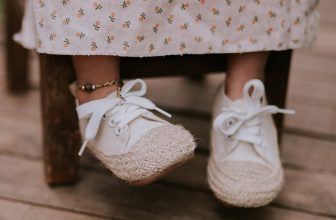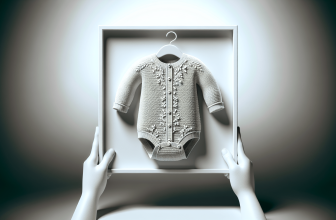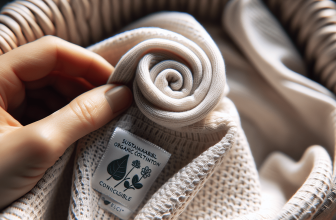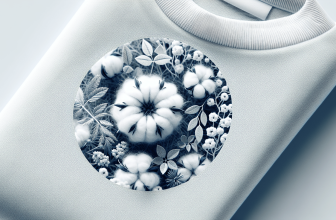When it comes to dressing your little bundle of joy, ensuring their comfort and well-being is of utmost importance. This is why the significance of choosing hypoallergenic clothing for babies cannot be emphasized enough. Hypoallergenic clothing is specifically designed to minimize the risk of allergic reactions and skin irritations in infants, making it a wise and considerate choice for parents. By opting for hypoallergenic clothing, you can provide your baby with a gentle and safe fabric that will keep their delicate skin healthy and irritation-free.
Understanding Allergies in Babies
Allergies in Babies
Babies are susceptible to allergies just like adults. However, their immune systems are still developing, which makes them more vulnerable to allergic reactions. Allergies in babies can manifest in various ways, such as skin irritation, respiratory issues, and digestive problems. It is crucial for parents to understand common allergens and their impact on babies.
Common Allergens
There are several common allergens that can trigger allergic reactions in babies. These include pollen, pet dander, mold spores, dust mites, certain foods (such as cow’s milk, eggs, peanuts, and wheat), and even certain fabrics. It is important to identify these allergens and take appropriate measures to reduce exposure and prevent allergic reactions.
Impact of Allergies on Babies
Allergies can have a significant impact on a baby’s health and well-being. Allergic reactions can cause discomfort and distress, affecting their sleep patterns, eating habits, and overall quality of life. Severe allergic reactions, such as anaphylaxis, can be life-threatening. Therefore, it is crucial for parents to take proactive steps to minimize the risk of allergies in their babies.
What is Hypoallergenic Clothing?
Definition of Hypoallergenic Clothing
Hypoallergenic clothing refers to garments that are specifically designed and manufactured to minimize the risk of allergic reactions. These clothes are made from materials that are less likely to irritate sensitive skin or trigger allergies. Hypoallergenic clothing aims to provide a comfortable and safe option for babies, especially those with sensitive or allergy-prone skin.
Materials Used in Hypoallergenic Clothing
Hypoallergenic clothing is often made from natural fabrics that have hypoallergenic properties. These materials include organic cotton, bamboo, silk, hemp, and wool. These fabrics are carefully chosen because they are less likely to contain irritants or allergens, and they are generally gentle on the skin. The use of synthetic materials, such as polyester and nylon, is avoided as they can be more likely to cause skin irritation.
This image is property of images.unsplash.com.
Benefits of Hypoallergenic Clothing for Babies
Reduced Risk of Skin Irritation
One of the main benefits of hypoallergenic clothing for babies is the reduced risk of skin irritation. Babies with sensitive skin or underlying skin conditions, such as eczema, can experience discomfort and inflammation when exposed to certain fabrics. Hypoallergenic clothing made from natural fabrics can minimize these reactions and provide a gentle and soothing experience for the baby.
Prevention of Allergic Reactions
Hypoallergenic clothing aims to prevent allergic reactions in babies. By using materials that are less likely to contain allergens or irritants, parents can reduce the risk of triggering allergic responses in their little ones. This can lead to improved comfort and overall well-being for babies, allowing them to play and sleep without any allergic discomfort.
Improved Comfort for Babies
Hypoallergenic clothing is designed to prioritize the comfort of babies. The soft and breathable materials used in these garments promote better airflow and reduce the risk of overheating or excessive perspiration. This can be particularly beneficial for babies who are prone to sweating or have a tendency to develop heat rashes. Hypoallergenic clothing ensures that babies can move freely and comfortably throughout the day.
Factors to Consider When Choosing Hypoallergenic Clothing
Material Composition
When choosing hypoallergenic clothing for babies, it is essential to consider the material composition. Opt for garments made from natural fabrics, such as organic cotton, bamboo, silk, hemp, or wool. These materials are less likely to cause skin irritation and are often free from harmful chemicals or additives.
Avoidance of Harsh Chemicals
To ensure the hypoallergenic properties of the clothing, it is important to avoid garments treated with harsh chemicals or synthetic dyes. These chemicals can potentially trigger allergic reactions or skin irritation. Look for clothing that is labeled as free from chlorine, formaldehyde, phthalates, and other common irritants.
Certifications and Standards
To confirm the authenticity of hypoallergenic clothing, look for certifications and standards on the labels. Certifications such as GOTS (Global Organic Textile Standard) and OEKO-TEX Standard 100 provide assurance that the garments have been tested for harmful substances and meet specific criteria for hypoallergenic properties.
This image is property of images.unsplash.com.
Understanding the Labeling of Hypoallergenic Clothing
Labeling Requirements
Labeling requirements for hypoallergenic clothing can vary from country to country. It is important to familiarize yourself with the specific labeling regulations in your region to ensure that you are selecting genuine hypoallergenic garments for your baby. Look for labels or symbols that indicate hypoallergenic properties or certifications.
Differentiating between Organic and Hypoallergenic
It is crucial to understand the difference between organic clothing and hypoallergenic clothing. While organic clothing is made from materials grown without the use of synthetic chemicals or pesticides, hypoallergenic clothing focuses on reducing the risk of allergic reactions. Hypoallergenic clothing can be made from both organic and non-organic materials, as long as they are less likely to cause allergies.
Common Misconceptions about Hypoallergenic Clothing
100% Hypoallergenic Claim
One common misconception is the belief that hypoallergenic clothing is 100% guaranteed to be allergy-proof. While hypoallergenic clothing significantly reduces the risk of allergic reactions, it cannot eliminate it entirely. Each baby may have different sensitivities, and what works for one may not work for another. It is important to monitor the baby’s response to hypoallergenic clothing and make adjustments if necessary.
Usage for Allergic Babies Only
Another misconception is that hypoallergenic clothing should only be used for babies with known allergies. In reality, hypoallergenic clothing can benefit all babies, regardless of whether they have allergies or not. The gentle and non-irritating nature of hypoallergenic fabrics can promote better skin health and overall comfort for all babies.
This image is property of images.unsplash.com.
Best Fabrics for Hypoallergenic Clothing
Organic Cotton
Organic cotton is a popular choice for hypoallergenic clothing due to its softness and breathability. It is grown without the use of harmful chemicals, making it less likely to cause allergic reactions or skin irritations.
Bamboo
Bamboo fabric is known for its hypoallergenic and antibacterial properties. It is extremely soft and gentle on the skin, making it an excellent choice for babies with sensitive skin or allergies.
Silk
Silk is a natural fabric that is highly breathable and hypoallergenic. It is smooth and soft, reducing the risk of skin irritation. However, silk may require special care and may not be suitable for all climates.
Hemp
Hemp fabric is durable, breathable, and resistant to mold and bacteria. It is a hypoallergenic option that is suitable for babies with allergies or sensitive skin. Hemp is also considered an environmentally friendly choice.
Wool
Contrary to popular belief, pure wool can be hypoallergenic. It is a natural and breathable fabric that can regulate body temperature. However, some babies may be sensitive to lanolin, a natural oil found in wool, so it is important to monitor their response.
Steps to Ensure Safety and Efficiency of Hypoallergenic Clothing
Proper Washing and Care
To maintain the hypoallergenic properties of clothing, it is important to follow proper washing and care instructions. Use mild, fragrance-free detergents and avoid fabric softeners or dryer sheets that can contain irritating chemicals. Wash garments in warm water and rinse thoroughly to remove any potential allergens or residues.
Avoidance of Chemical-Based Detergents
Chemical-based detergents can leave residues on clothing that may cause skin irritation or trigger allergies. It is recommended to use detergents specifically formulated for sensitive skin or hypoallergenic clothing. Look for detergents labeled as fragrance-free, dye-free, and free from harsh chemicals.
Guidelines for Choosing Hypoallergenic Clothing
Seek Recommendations
Seek recommendations from other parents or healthcare professionals who have experience with hypoallergenic clothing. They can provide valuable insights and suggest specific brands or products that have proven to be effective in reducing allergic reactions.
Evaluate Fabric Softness
When choosing hypoallergenic clothing, evaluate the fabric’s softness. Opt for fabrics that feel gentle and smooth to the touch. Avoid rough or scratchy materials that may cause skin irritation or discomfort for the baby.
Research Brands and Manufacturers
Before making a purchase, research the brands and manufacturers of hypoallergenic clothing. Look for reputable companies that prioritize safety, quality, and customer satisfaction. Read reviews and testimonials to gauge the effectiveness and reliability of their products.
Conclusion
Choosing hypoallergenic clothing for your baby is an important decision that can significantly impact their comfort and well-being. By understanding allergies in babies, the benefits of hypoallergenic clothing, and the factors to consider when selecting garments, parents can make informed choices. Remember to carefully evaluate material composition, avoid harsh chemicals, and look for certifications to ensure the authenticity and hypoallergenic properties of the clothing. Follow proper washing and care instructions, and seek recommendations from trusted sources to ensure the safety and efficiency of hypoallergenic clothing. With these guidelines in mind, you can provide your baby with a comfortable and safe clothing option that minimizes the risk of allergic reactions and promotes their overall health.











